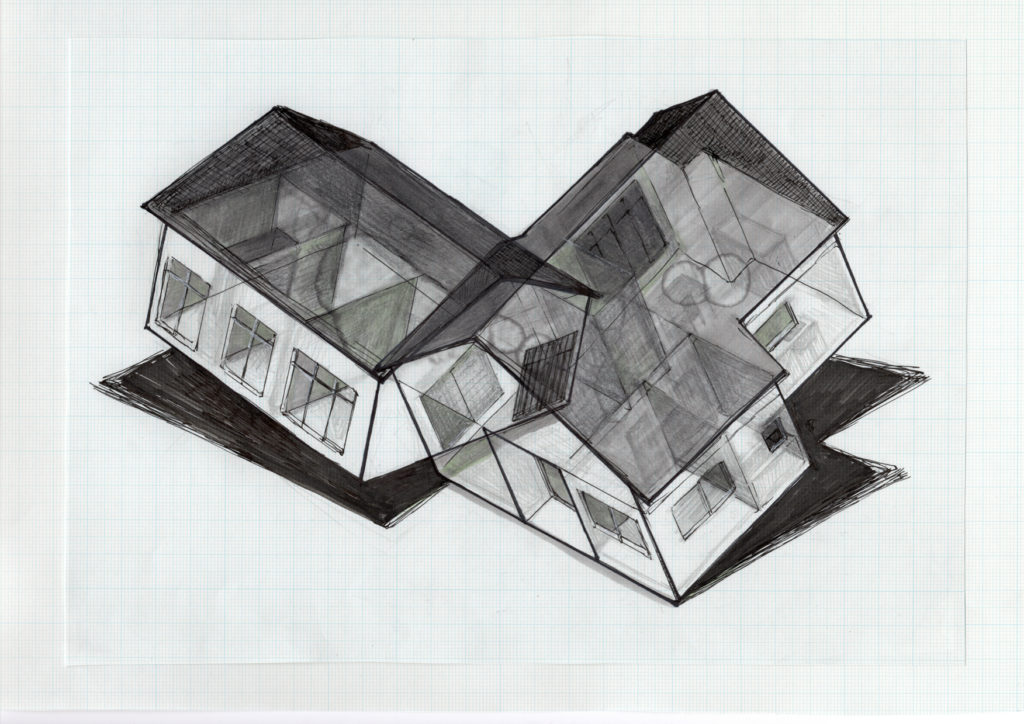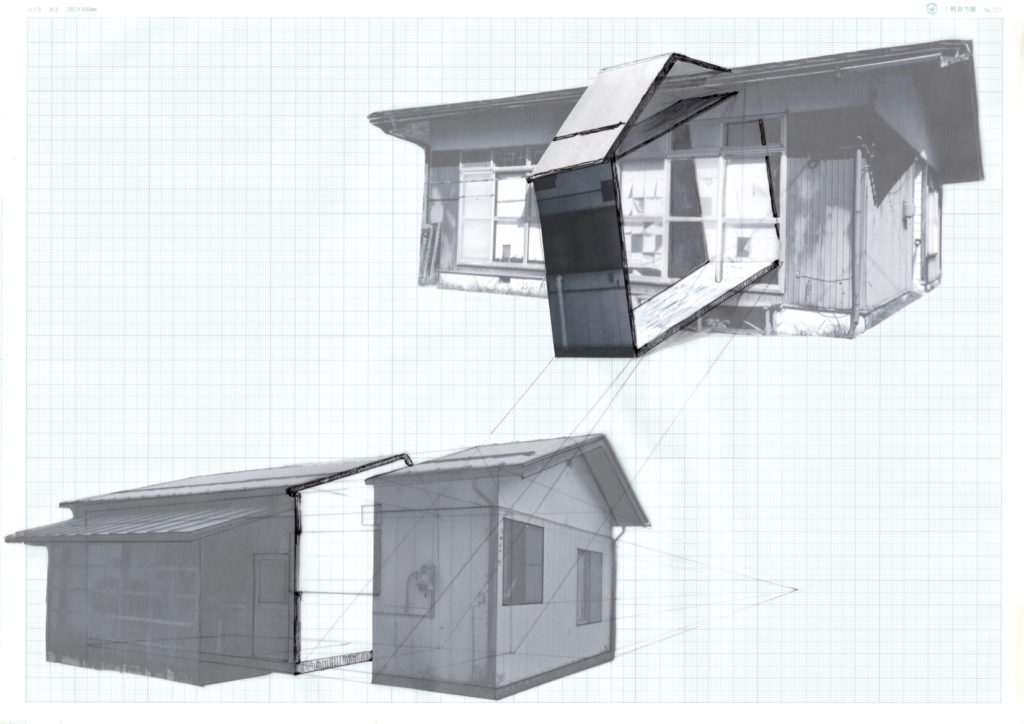Northern Alps Art Festival 2020-2021 Archives
Date of publication: July 1st 2022
Price: ¥2500 + tax
Published by the Northern Alps Art Festival Executive Committee
Supervised by Kitagawa Fram
北アルプス国際芸術祭 2020-2021 記録集
発行日 2022年7月1日発行
定価 2,500円+税
発行 北アルプス国際芸術祭実行委員会
監修 北川フラム

北アルプス国際芸術祭では、 作家として建築家は参加していないが (会場構成などでは関与)、やはり建築的/風景的な作品は大きな役割を果たしている。 特に興味深いのは、持田敦子のあっけらかんとしつつも、迫力をもつ 「衝突(あるいは裂け目)」だった。 彼女が東京藝大の在籍時に制作した 「T家の転回」(2018年)は、 リチャード・ウィルソンの「場の回転」(2008年)のように、 切断された建築の一部が回転するプロジェクトだが、建築界でも話題になっており、 以前から作品を見たかった作家である。「衝突(あるいは裂け目)」は、旧教員住宅の中央部分を切り取って移動し、隣家の真ん中に斜め方向で貫入するものだ。 アートの文脈では、ゴードン・マッタ・クラークの切断、 建築の分野では、プレ ートテクトニクスの比喩も動員したディコンストラクティビズム (脱構築主義) のデザインを想起させるだろう。また個人的には、地震よりも、津波の被災地で目撃した建築の移動と破壊の状況と似ている。もっとも、こんなにきれいな断面は自然災害で生じない。 机やキッチン台も、仮想の面によってすっぱり切り取りられている。こうした鋭いデザインの感覚は、ディラー+スコフィディオのインスタレーションや、打開連合設計事務所のリノベーション、あるいは、いがらしみきおの恐るべき漫画『sink』 に近い。 ともあれ、アートならではの面白さは、2つの建築の重なりだろう。 場所を占有する建築は、 同じ敷地に2つ存在することができない。 しかし、アートにはそれが可能だ。かくして教員の平凡な家屋が、 徹底的に異化される。 保存が難しいとはいえ、 会期の終了後に解体されるのがもったいない力作だ。
五十嵐太郎(建築家/東北大学大学院教授)「批判的地域主義としてのアート」より抜粋

Although no architects participated as artists in the North Alps International Art Festival (except from being involved in the venue organization), architectural and landscape works still played a major role in the festival. Particularly interesting was Atsuko Mochida’s unassuming yet powerful “Collision (or Rupture)“. Her “The Revolving House of T. ” (2018), created while she was a student at Tokyo University of the Arts, is a project in which a severed piece of architecture rotates, similar to Richard Wilson’s “Turning the Place Over” (2008), and has been the talk of the architectural world. In “Collision (or Rupture)“, the central section of a former school teacher’s residence is cut out and moved, diagonally penetrating a neighboring house. In the context of art, Mochida’s work evokes Gordon Matta Clark’s cutting; in the field of architecture, it references deconstructivist design, which also mobilizes the metaphor of plate tectonics. Personally, I find the work reminding of the situation of architectural displacement and destruction I witnessed in the tsunami-affected areas than to that of an earthquake. However, such a clean cross-section does not occur in natural disasters. Even objects such as a desk and a kitchen table are being sliced, exposing a clean cut surface. Mochida’s keen sense of design is close to the installations of Diller + Scofidio, the renovations of the Uchikai Rengo Design Office, or Mikio Igarashi’s terrifying manga “Sink“. The interesting thing about Mochida’s art is the stacking of two buildings onto each other. No two architectural structures can occupy the same space at the same time. Art, however, can. In this way, the ordinary house of a teacher is thoroughly transformed. Although it will be difficult to preserve, it would be a shame to see it dismantled at the end of the Triennial.
Excerpt from “Art as Critical Regionalism” by Taro Igarashi (Architect / Professor, Tohoku University Graduate School) Translated by Atsuko Mochida
